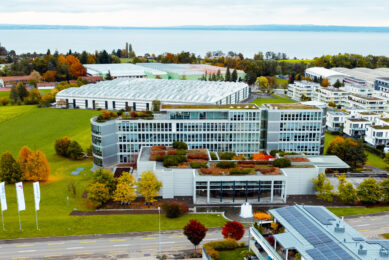Feeding sick pigs
How to properly feed sick pigs is probably the most important question scientists throughout the world will struggle to answer in the next ten to twenty years. As we move closer to a global economy based heavily on industrial pig production, health and diseases become more and more important from an economic point of view.
The problem with sick pigs, even subclinically sick, is that they exhibit anorexia, or simply they don’t eat much or at all. So, what causes anorexia and what should we do about it at the farm level?
Anorexia
First, we must understand that anorexia, or loss of appetite, is an integral part of the overall host acute phase response to disease. The animal simply refuses feed and its metabolic burden to inhibit the proliferation of pathogens. This is achieved by the following mechanisms:
1. Reduced feeding activity reserves energy for immune system functions. Of course, this energy comes from body lipid reserves and prolonged dependance on these stores emaciates animals. But, at the begining of a disease, it is actually beneficial!
2. Reduced nutrient availability limits the extent of pathogen proliferation. Pathogens in the gastrointestinal tract have first access to nutrients from feed, especially if digestion is impaired due to the disease, as is often the case with gastrointestinal disorders.
3. The metabolically negative effects of the acute phase response are limited. The acute phase response is the first response immediately after an infection. During this time, the metabolic state of the animal is switched from anabolism and growth in the healthy pig to catabolism and muscle loss in the diseased pig. Excess absorbed nutrients are thus considered ‘toxic’!
4. Glucagon production is enhanced and the immune system response is enhanced. Under experimental conditions, force-feeding infected animals increased mortality and reduced survival time, further illustrating the beneficial effects of anorexia. However, experience from human trials indicates that long-term anorexia is equally detrimental because restricted food intake beyond the first 7-10 days of disease outbreak greatly decreases the chances of a rapid recovery.
Intervention strategy
Because reduced feed intake is always associated with reduced growth rate, a common intervention strategy is to increase dietary nutrient density to supply the pig with nutrients that potentially limit growth. However, increasing lysine or protein concentration or treating pigs with porcine somatotrophin, an anabolic agent, failed to increase protein deposition and overall growth rate in pigs experiencing a high level of immune system activity.
In conclusion, we are still far away from understanding how to feed pigs under disease stress. We know that forcing them to eat is not beneficial in the short term, but we also experience productivity losses when anorexia prevails. We also understand that nutrient requirements for fighting disease are quite different from those required for growth. The next challenge is how to provide a diet that actually helps the pig to fight the disease. Up to now, we have been trying to make it just keep growing!











